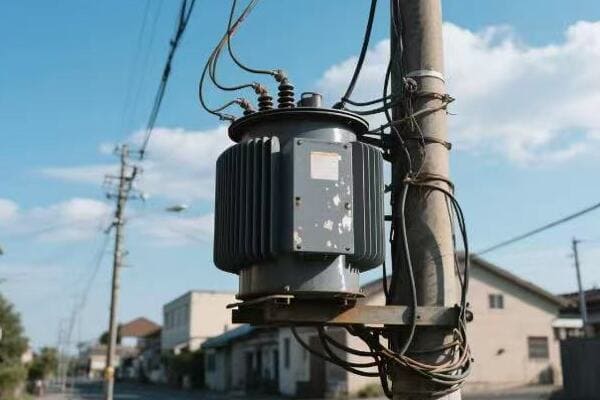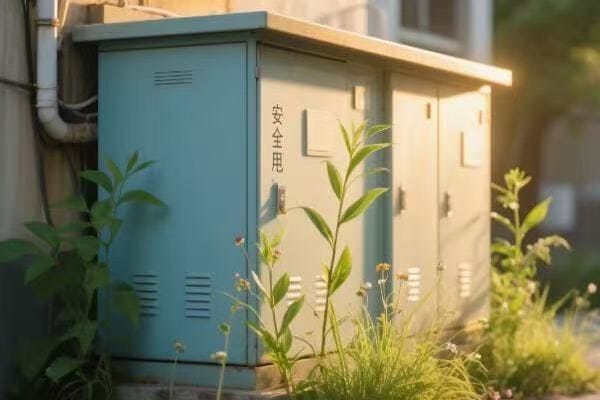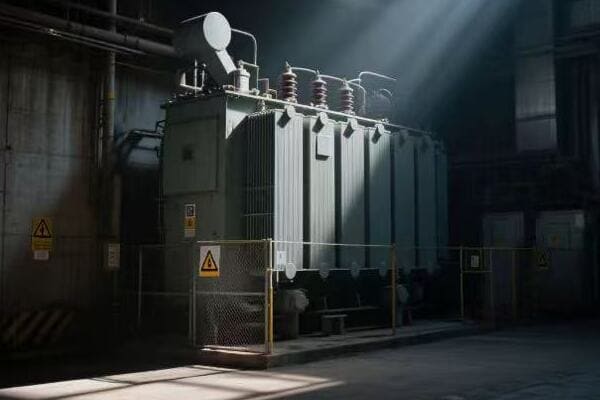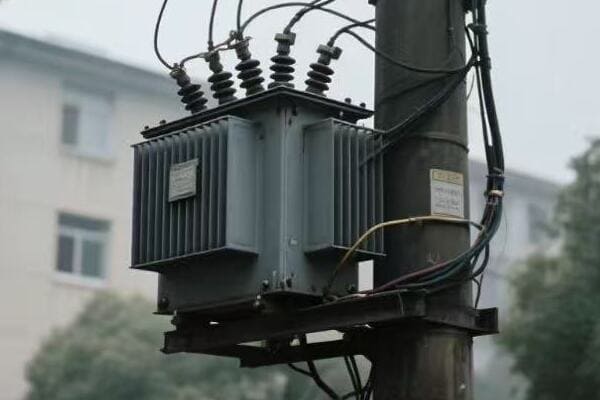Distribution Transformer: Powering the Future of Smart Grids and Sustainable Energy Networks?
Ever wondered what’s driving the evolution of our power grids? The answer lies in a crucial component: the distribution transformer. These unsung heroes are reshaping our energy landscape.
Distribution transformers are revolutionizing smart grids and sustainable energy networks. They enable efficient power distribution, integrate renewable sources, and enhance grid reliability. These transformers are the backbone of our evolving energy infrastructure, paving the way for a greener, more resilient future.

As someone who’s spent years in the power industry, I’ve witnessed firsthand the transformative impact of these devices. Let’s explore how distribution transformers are shaping the future of our energy systems.
Smart Grid Evolution: The Pivotal Role of Advanced Distribution Transformers?
Have you ever considered how our aging power grids are adapting to modern demands? Advanced distribution transformers are at the heart of this transformation, but how exactly are they driving the smart grid evolution?
Advanced distribution transformers play a pivotal role in smart grid evolution by enabling real-time monitoring, automated decision-making, and efficient power flow management. They act as intelligent nodes in the grid, facilitating two-way communication and adaptive power distribution.

Let’s dive deeper into how these transformers are revolutionizing our power grids:
Real-Time Monitoring and Analytics
Keeping a pulse on the grid:
- Sensors continuously track voltage, current, and temperature
- Data is transmitted to control centers in real-time
- AI algorithms analyze this data for insights and predictions
Automated Decision Making
Transformers that think for themselves:
- Built-in processors make instant decisions based on grid conditions
- They can adjust voltage levels to optimize power flow
- Automated load balancing ensures efficient power distribution
Two-Way Communication
Enabling a dialogue within the grid:
- Transformers communicate with control centers and other grid components
- They receive commands and update their status in real-time
- This facilitates coordinated responses to grid events
Power Quality Management
Ensuring clean, stable power:
- Advanced transformers actively manage power quality issues
- They mitigate harmonics and voltage fluctuations
- This results in more reliable power for sensitive electronic devices
Fault Detection and Self-Healing
Minimizing downtime and disruptions:
- Transformers can detect and isolate faults quickly
- They work with other grid components to reroute power around problems
- This self-healing capability reduces outage duration and impact
| Feature | Smart Grid Benefit | Impact on Power Distribution |
|---|---|---|
| Real-Time Monitoring | Proactive grid management | Reduced outages and improved efficiency |
| Automated Decisions | Faster response to grid events | Enhanced grid stability and reliability |
| Two-Way Communication | Coordinated grid operations | More flexible and resilient power system |
| Power Quality Management | Stable, clean power supply | Better performance of connected devices |
| Fault Detection & Self-Healing | Minimized outage impact | Increased overall grid reliability |
I remember a project where we upgraded a city’s aging grid with these advanced transformers. The change was remarkable. Before, the utility struggled with frequent outages and voltage issues. After the upgrade, they could predict and prevent problems before they occurred. A grid operator told me, "It’s like we went from driving a car with no dashboard to piloting a high-tech aircraft."
Another eye-opening experience was in a suburban area prone to storm-related blackouts. We implemented a network of smart transformers with self-healing capabilities. During the next major storm, the system automatically isolated damaged sections and rerouted power. What would have been a days-long blackout was reduced to brief, localized outages. The mayor called it a "game-changer" for the community’s resilience.
These experiences have shown me that advanced distribution transformers are more than just components of the smart grid – they’re its nervous system. They’re enabling a level of grid intelligence and responsiveness that was unimaginable just a few years ago. As we continue to push the boundaries of smart grid technology, these transformers will be at the forefront, driving us towards a more efficient, reliable, and responsive energy future.
Sustainability in Action: Transformers as Enablers of Green Energy Integration?
The push for sustainable energy is reshaping our power landscape. But how are distribution transformers adapting to this green revolution, and what role do they play in integrating renewable sources?
Distribution transformers are key enablers of green energy integration. They manage the variable nature of renewable sources, facilitate bi-directional power flow, and support energy storage systems. These capabilities are crucial for creating a sustainable, flexible power grid.

Let’s explore how transformers are making sustainable energy a reality:
Variable Input Management
Handling the unpredictability of renewables:
- Advanced voltage regulation copes with fluctuating inputs from solar and wind
- Power electronics in transformers smooth out energy variations
- This ensures stable grid voltage despite intermittent renewable generation
Bi-Directional Power Flow
Enabling energy prosumers:
- Transformers manage power flow both to and from the grid
- They support feed-in from residential solar panels and small wind turbines
- This facilitates the growth of distributed energy resources
Energy Storage Integration
Balancing supply and demand:
- Transformers work seamlessly with battery storage systems
- They manage charging during excess production and discharging during peak demand
- This improves the overall reliability and efficiency of renewable energy
Microgrid Support
Fostering local energy independence:
- Transformers enable the formation and operation of microgrids
- They support seamless transitions between grid-connected and islanded modes
- This increases community resilience and maximizes local renewable use
Smart Inverter Coordination
Optimizing renewable energy conversion:
- Transformers communicate with smart inverters for efficient power conversion
- They coordinate power factor correction and voltage support
- This enhances overall system stability with high renewable penetration
| Feature | Sustainability Benefit | Impact on Green Energy Integration |
|---|---|---|
| Variable Input Management | Stable grid with renewables | Increased renewable hosting capacity |
| Bi-Directional Flow | Support for prosumers | Growth of distributed energy resources |
| Energy Storage Integration | Improved renewable reliability | Better utilization of green energy |
| Microgrid Support | Local energy resilience | Maximized use of local renewables |
| Smart Inverter Coordination | Enhanced system stability | Higher renewable penetration possible |
I recall a project in a small town aiming for 100% renewable energy. The challenge was integrating a large solar farm and numerous residential panels. We installed advanced transformers capable of handling bi-directional flow and variable inputs. The results were impressive. On sunny days, the town not only met its own needs but also fed excess power back to the regional grid. A local official proudly told me, "We’ve gone from energy consumers to energy producers."
Another fascinating experience was in a remote community prone to power outages. We implemented a microgrid system with smart transformers. During a severe storm that knocked out the main grid, the community seamlessly switched to local solar and wind power. They maintained essential services for days, showcasing incredible resilience. A resident remarked, "It’s the first time we felt truly energy independent."
These experiences have shown me that distribution transformers are not just adapting to the green energy revolution – they’re driving it. By enabling the integration of renewable sources, supporting energy storage, and facilitating microgrids, these transformers are laying the foundation for a more sustainable and resilient energy future. As we continue to push towards cleaner energy sources, the role of these transformers in bridging the gap between traditional grids and renewable systems will only grow in importance.
Efficiency Redefined: Innovative Features Enhancing Power Distribution Reliability?
In the world of power distribution, efficiency and reliability go hand in hand. But how are innovative features in distribution transformers redefining these crucial aspects?
Distribution transformers are redefining efficiency and reliability through innovative features like advanced cooling systems, smart load management, and predictive maintenance capabilities. These innovations minimize losses, extend equipment life, and ensure consistent power delivery.

Let’s delve into the innovative features enhancing power distribution reliability:
Advanced Cooling Systems
Keeping transformers at optimal temperatures:
- Nanofluids and ester-based oils improve heat dissipation
- Smart cooling controls adjust based on load and ambient conditions
- This extends transformer life and allows for higher capacity utilization
Smart Load Management
Balancing power distribution efficiently:
- Real-time load monitoring and forecasting
- Automatic load tap changers adjust voltage levels
- This optimizes power flow and reduces stress on the system
Predictive Maintenance
Preventing issues before they occur:
- AI algorithms analyze transformer health data
- They predict potential failures and maintenance needs
- This proactive approach minimizes unexpected outages
Low-Loss Core Materials
Minimizing energy waste:
- Amorphous metal cores significantly reduce no-load losses
- High-grade silicon steel improves overall efficiency
- These materials contribute to substantial energy savings over time
Compact and Modular Designs
Flexibility in installation and maintenance:
- Smaller footprints allow for more flexible placement
- Modular components enable easier repairs and upgrades
- This reduces downtime and improves overall reliability
| Feature | Efficiency Benefit | Reliability Impact |
|---|---|---|
| Advanced Cooling | Extended transformer life | Reduced risk of thermal-related failures |
| Smart Load Management | Optimized power distribution | Stable voltage levels and reduced outages |
| Predictive Maintenance | Proactive issue resolution | Minimized unexpected downtime |
| Low-Loss Materials | Reduced energy waste | Consistent performance over time |
| Compact Modular Design | Easier maintenance and upgrades | Quicker restoration of service |
I remember a project where we replaced old transformers in a busy industrial area with new, high-efficiency models. The difference was striking. Energy losses dropped by 30%, and the facility manager reported a significant decrease in their electricity bills. He told me, "It’s like we’ve plugged a massive energy leak we didn’t even know we had."
Another eye-opening experience was implementing predictive maintenance systems for a utility company. Within the first year, the system predicted and prevented three major failures that would have caused widespread outages. The utility’s reliability metrics improved dramatically, and a senior engineer remarked, "We’ve moved from reactive to proactive, and it’s changing the game for us."
These experiences have shown me that efficiency and reliability in power distribution are not static concepts – they’re constantly evolving with new innovations. The advanced features in modern distribution transformers are not just incremental improvements; they’re reshaping how we think about energy efficiency and grid reliability. As we continue to push the boundaries of what’s possible, these innovations will play a crucial role in creating more resilient, efficient, and sustainable power distribution systems.
Technological Frontiers: Cutting-Edge Innovations Shaping Next-Gen Transformers?
The world of distribution transformers is on the cusp of a technological revolution. But what cutting-edge innovations are shaping the next generation of these crucial devices?
Next-gen distribution transformers are being shaped by cutting-edge innovations like AI integration, quantum computing applications, nanotechnology in materials, and advanced cybersecurity features. These technologies are pushing the boundaries of efficiency, intelligence, and security in power distribution.

Let’s explore the technological frontiers that are redefining distribution transformers:
AI and Machine Learning Integration
Making transformers smarter:
- Deep learning algorithms for predictive analytics and decision-making
- Neural networks optimizing power flow in real-time
- AI-driven self-diagnosis and self-healing capabilities
Quantum Computing Applications
Unlocking new levels of computational power:
- Quantum algorithms for ultra-fast grid optimization
- Quantum-resistant encryption for enhanced security
- Quantum sensors for unprecedented accuracy in measurements
Nanotechnology in Materials
Revolutionizing transformer construction:
- Nanostructured core materials for minimal energy losses
- Self-healing nanocomposites for extended transformer life
- Nano-enhanced cooling fluids for superior heat dissipation
Advanced Cybersecurity Features
Protecting the smart grid:
- Blockchain technology for secure data transmission
- AI-powered threat detection and response systems
- Quantum key distribution for unbreakable communication
Internet of Things (IoT) Ecosystem
Creating a network of intelligent devices:
- Seamless integration with other smart grid components
- Edge computing for faster, localized decision-making
- Vast sensor networks for comprehensive grid awareness
| Innovation | Technological Impact | Benefit to Power Distribution |
|---|---|---|
| AI Integration | Intelligent grid management | Optimized performance and reliability |
| Quantum Computing | Enhanced computational capabilities | More efficient and secure grid operations |
| Nanotechnology | Improved materials and efficiency | Reduced losses and extended equipment life |
| Advanced Cybersecurity | Robust protection against cyber threats | Increased grid resilience and data security |
| IoT Ecosystem | Comprehensive grid awareness | More responsive and adaptive power systems |
I recently visited a research lab working on next-gen transformer prototypes. The lead scientist showed me a transformer core made of a new nanostructured material. Its efficiency was off the charts – losses were nearly 50% lower than the best current models. "This could revolutionize energy conservation in power distribution," he explained, his eyes gleaming with excitement.
Another fascinating experience was at a utility company testing quantum-resistant encryption on their smart transformers. They simulated a cyber attack using a quantum computer, and the new security measures held strong. The cybersecurity expert told me, "We’re not just securing today’s grid; we’re future-proofing it against threats that don’t even exist yet."
These experiences have shown me that the future of distribution transformers is incredibly exciting. We’re not just improving existing technology; we’re reimagining what’s possible. These cutting-edge innovations are paving the way for transformers that are not only more efficient and reliable but also smarter and more secure than ever before. As these technologies mature and find their way into widespread application, they will fundamentally transform our power distribution systems, making them more capable of meeting the complex energy needs of the future.
Adapting to Change: Distribution Transformers in the Era of Renewable Energy?
The rise of renewable energy is reshaping our power landscape. But how are distribution transformers adapting to this new era, and what challenges do they face?
Distribution transformers are adapting to the renewable energy era by incorporating features like bi-directional power flow management, enhanced voltage regulation, and energy storage integration. These adaptations are crucial for managing the intermittent nature of renewables and ensuring grid stability.

Let’s explore how distribution transformers are evolving to meet the challenges of renewable energy:
Bi-Directional Power Flow Management
Handling energy flow in both directions:
- Transformers now manage power from grid to consumer and vice versa
- They support feed-in from residential solar panels and small wind turbines
- This enables the growth of prosumers in the energy market
Enhanced Voltage Regulation
Dealing with voltage fluctuations:
- Advanced on-load tap changers adjust voltage levels in real-time
- Smart inverter coordination for smoother renewable integration
- This maintains power quality despite variable renewable inputs
Energy Storage Integration
Balancing supply and demand:
- Transformers work in tandem with battery storage systems
- They manage charging during excess production and discharging during peak demand
- This improves overall grid stability and renewable energy utilization
Harmonic Mitigation
Addressing power quality issues:
- Special winding designs to suppress harmonics from renewable sources
- Active harmonic filters integrated into transformer systems
- This ensures clean power delivery even with high renewable penetration
Adaptive Protection Systems
Ensuring safety in a changing grid:
- Microprocessor-based relays adapt to changing fault current levels
- Directional protection for managing bi-directional power flow
- This maintains grid safety in the face of evolving energy sources
| Adaptation | Renewable Energy Challenge | Transformer Solution |
|---|---|---|
| Bi-Directional Flow | Prosumer energy feed-in | Management of two-way power flow |
| Voltage Regulation | Fluctuating renewable output | Real-time voltage adjustments |
| Energy Storage | Intermittent renewable generation | Integrated storage management |
| Harmonic Mitigation | Power quality issues | Advanced harmonic suppression |
| Adaptive Protection | Changing fault current patterns | Flexible, intelligent protection systems |
I recall a project in a suburban area with high solar panel adoption. We installed transformers with advanced bi-directional flow capabilities. On sunny days, the neighborhood not only met its own power needs but also fed excess energy back to the grid. A utility manager told me, "We’ve gonefrom managing consumption to orchestrating a complex energy exchange."
Another eye-opening experience was in a rural community integrating a large wind farm. The variable output was causing significant voltage fluctuations. We implemented transformers with enhanced voltage regulation and energy storage integration. The result was remarkable stability, even on days with gusty winds. A local engineer remarked, "It’s like we’ve tamed the wind."
These experiences have shown me that distribution transformers are not just passive components in the renewable energy era – they’re active players in managing and enabling the transition to cleaner energy sources. The adaptations we’re seeing in transformer technology are crucial for creating a grid that can handle the variability and distributed nature of renewable energy.
As we continue to increase our reliance on renewables, the role of these adapted transformers will only grow in importance. They’re not just facilitating the integration of green energy; they’re making it possible for our grids to evolve into more flexible, resilient systems capable of handling the complex energy landscape of the future.
The challenges posed by renewable energy – from managing bi-directional power flows to mitigating harmonics and voltage fluctuations – are pushing transformer technology to new heights. Each adaptation represents a step towards a more sustainable and efficient energy future. It’s an exciting time to be in this field, watching and participating in this transformation of our energy infrastructure.
Conclusion
Distribution transformers are evolving rapidly, adapting to smart grids, enabling renewable integration, and incorporating cutting-edge technologies. They are key to creating efficient, reliable, and sustainable power networks for our future energy needs.
Free CHBEB Transformer Catalog Download
Get the full range of CHBEB transformers in one catalog.
Includes oil-immersed, dry-type, pad-mounted, and custom solutions.
Quick Message
Request A free quote
We'd like to work with you
- +86 15558785111
- [email protected]
- +86 15558785111
What We Do
CHINA BEI ER BIAN (CHBEB) GROUP, with 218 million in registered capital, originated from Beijing Beierbian Transformer Group. Headquartered in Beijing for R&D, it operates major production bases in Nanjing and Yueqing, producing high-quality products.
Latest Product
address
BeiJing
No 3,RongJing East Road,BeiJing Economic Technological Development Area,BeiJing,China
JiangSu
No 7️Xiangfeng Road,Jiangning,NanJing,JiangSu,China
WenZhou
No.211, Wei 16 Road, Industrial Zone, Yueqing, Wenzhou, Zhejiang, China.
XiangYang Industrial Zone ,YueQing,WenZhou,ZheJiang,China
contact us
- [email protected]
- +86 13057780111
- +86 13057780111
- +86 15558785111
Copyright © Bei Er Bian Group


